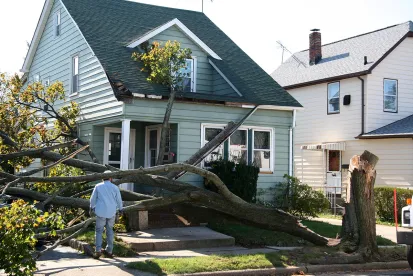Hurricane Ida brought strong winds, flooding, and mass destruction along the Louisiana coast. Although the Gulf South is no stranger to hard-hitting storms, each disaster brings a new set of obstacles for property owners and homeowners.
With the recovery process underway, many residents are still struggling to find the resources needed to rebuild or protect their investments. Information on possible funding, temporary housing, and other assistance is available from the Federal Emergency Management Agency (FEMA) and other organizations. But if you own a flood-impacted property, you may face other significant and perhaps more long-term questions such as: What can you do now to protect the value — including the resale value — of your property?
A key factor in protecting your property value will be how well you can demonstrate to prospective purchasers, appraisers, inspectors, lenders, insurers, and others that the storm-related damage was properly repaired or otherwise addressed and that you took the proper steps to limit post-storm damage.
Although laws differ throughout the Southeast, we suggest that the following steps be taken to help ensure you are protecting your property value:
-
Step 1: Notify Your Insurance Company and FEMA — Involve your insurance and FEMA adjusters in the process as early as possible, ideally before conducting demolition, rebuilding, or remodeling work.
-
Step 2: Prevent Further Damage — Take steps to prevent post-storm damage, such as patching or tarping damaged roofs, boarding up broken windows, and removing and storing salvageable items.
-
Step 3: Document the Damage — Take photos or videos of the damage, and make a list of damaged items.
-
Step 4: Make and Document the Repairs — Air out the property and remove damaged carpet, flooring, sheetrock, and other porous items. Follow the local ordinances, and obtain all required permits when making repairs. Keep a file that includes purchase orders or invoices, permits, agreements with contractors, and similar documents, and maintain a summary of the actions taken.
-
Step 5: Perform Mold Assessment and Remediation — Consider obtaining a mold assessment and, if necessary, mold remediation. Be sure contractors who conduct mold remediation or apply biocides are properly licensed, and retain related documentation in your file.
-
Step 6: Compose a Seller’s Disclosure — Disclose flood, mold, and other issues to prospective purchasers as required by state law and as a matter of good faith.
Additional tips and strategies can be found in our past articles Steps One, Two…Now What Do I Do? Protecting Your Property Value and After the Flood—Strategies for Protecting the Value of Your Home.
Further information is also available at the following regulatory agency links:
-
Louisiana Department of Insurance: After the Storm Resources
-
The Louisiana Real Estate Commission: Property Disclosure Exemption Form
-
The Louisiana State Board of Home Inspectors: Licensed Home Inspectors
-
Louisiana State Licensing Board for Contractors: Online Contractor Search
-
Department of Agriculture and Forestry: Pesticide and Environmental Programs
-
FEMA: Initial Restoration for Flooded Buildings (Hurricane Sandy Recovery Advisory)
Co-authored by Andrew Jarreau




 />i
/>i
